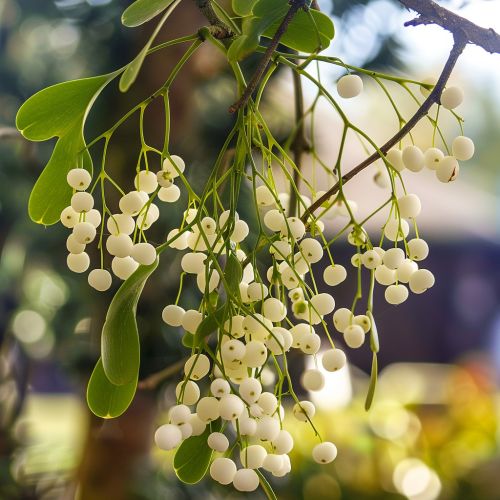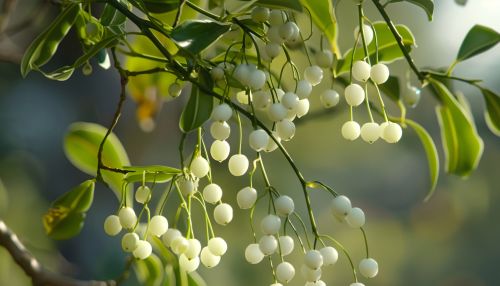Mistletoe
Introduction
Mistletoe is a common name for several species of parasitic plants that grow attached to and within the branches of a tree or shrub. The name 'mistletoe' is derived from the older English word 'misteltan', which translates to 'dung twig', due to the plant's method of propagation through bird droppings.
Biology and Ecology
Mistletoes are hemiparasites, meaning they perform photosynthesis to some extent, but also derive nutrients from their host plant. This dual mode of nutrition allows them to grow in a variety of environments and climates, ranging from tropical to temperate regions.


Mistletoes have evolved a unique mechanism for seed dispersal. The seeds are coated in a sticky substance called viscin. When birds eat the berries, the seeds stick to their beaks or feet and are transported to new host trees.
Taxonomy
Mistletoes belong to the order Santalales, which includes about 1,000 species of parasitic plants. The most well-known mistletoe species belong to the genera Viscum, Phoradendron, and Amyema.
Cultural Significance
Mistletoe has a rich cultural history, dating back to ancient times. It has been used in various cultural and religious ceremonies, particularly in European traditions. In Norse mythology, mistletoe was considered a symbol of love and friendship, which may be the origin of the custom of kissing under the mistletoe during the Christmas season.
Medical Use
Mistletoe extracts have been used in traditional medicine for centuries, and are currently being researched for their potential use in treating various types of cancer. However, the efficacy and safety of mistletoe therapy is still under scientific debate.
Conservation
While mistletoe is often considered a pest due to its parasitic nature, it plays a crucial role in biodiversity. Many bird and insect species rely on mistletoe for food and habitat. However, changes in land use and tree management practices are threatening mistletoe populations in some areas.
